Blaze-winged Conure
Also known as:
Bronze-winged Conure or Parakeet
Also known as:
Bronze-winged Conure or Parakeet
DID YOU KNOW?
The Blaze-winged Conure was once conspecific with the Maroon-bellied Conure, Pyrrhura frontalis.

Pyrrhura

devillei
Size:
26 cm (10.1 in)
Weight:
As for Pyrrhura frontalis: 70 g (2.5 oz)
Subspecies including nominate:
one
Colour Adult:
Both adults partly green; grey/brown crown; green cheeks; olive/brown breast, with white/brown barring; red bend of wing, carpal edge and lesser underwing coverts; olive tail. Beak dark grey. Eye ring bare and white. Eye brown.
Colour Juvenile:
Not recorded.
Call:
As for Pyrrhura frontalis: Flight calls are rapidly repeated screeches mixed with more prolonged, high-pitched notes. Sharp, quick notes when alarmed.
More Information:
Content Sources:
CITES
BirdLife International
Cornell Lab of Ornithology/Birds of the World
A Guide to Parrots of the World, Juniper and Parr, 1998
Parrots of the World, Forshaw, 2006. 2010 edition
Parrots in Aviculture, Low, 1992.
Lexicon of Parrots, Thomas Arndt.
Captive Status:
Uncommon.
Longevity:
As for Pyrrhura frontalis: 20-25 yrs.
Housing:
As for Pyrrhura frontalis: aviary or suspended enclosure, minimum length 2 m (6.5 ft).
Diet:
As for Pyrrhura frontalis: fruits such as: apple, pear, banana, orange, pomegranate, cactus fruits, kiwi, papaya, forming about 30 percent of the diet; vegetables such as: carrot, celery, green beans and peas in the pod; green leaves such as: Swiss chard, lettuce, sowthistle, dandelion, kale, chickweed; fresh corn; spray millet; small seed mix such as: canary, millet, and smaller amounts of oats, buckwheat, safflower and a little hemp; soaked or sprouted sunflower seed; cooked beans and pulses, boiled maize and complete pellet.
Enrichment:
Provide overhead misters or shallow water bowls for bathing; bird-safe, unsprayed flowering, fir, pine, willow and elder branches; wooden block or vegetable tanned leather toys; heat sterilized pine cones; swings, ropes, ladders and noise makers.
Nest Box Size:
As for Pyrrhura frontalis: vertical nest box 8″ x 8″ x 30″ (20.3 cm x 20.3 cm x 76.2 cm).
Clutch Size:
As for Pyrrhura frontalis: 4-6
Fledging Age:
As for Pyrrhura frontalis: 7-8 weeks
Hatch Weight:
—
Peak Weight:
—
Weaning Weight:
—
World Population:
Unknown, decreasing.
IUCN Red List Status:
Least Concern
CITES Listing:
Appendix II
Threat Summary:
Not globally threatened. It is locally common in Brazil but rare and uncommon in Paraguay. Apparent hybridisation with P. frontalis has been observed. The species is trapped at low levels for the cagebird trade. This species is suspected to undergo a decline owing to extensive habitat loss and degradation within its range (where it now survives in a fragmented landscape) and the impacts of trapping. As the species occupies woodland, scrub and savanna, tree cover loss alone is unlikely to drive a substantial population decline, and trapping pressure is described as ‘minimal.’ Therefore, population declines are thought to be slow, not exceeding 20% over three generations.
Range:
SE Bolivia to far SW Mato Grosso, S Brazil.
Habitat:
Found in deciduous and gallery woodland, nearby savanna and scrubland.
Wild Diet:
Feeds on fruit pulp, seeds, flowers, nuts, galls and other plant matter, and fly larvae. Seen consuming Sapium haematospermum fruits. Recorded chewing on leaves of Bromelia balansa.
Ecology and Behaviour:
Similar to that of Pyrrhura frontalis: are social; usually seen in flocks of up to 40 birds. Generally tolerant of disturbance. Nests in tree cavity.
Clutch and Egg Size:
Probably 4-6 eggs, 26.0 x 21.0 mm (1 x 0.8 in).
Breeding Season:
Not recorded.
Related Links:
—
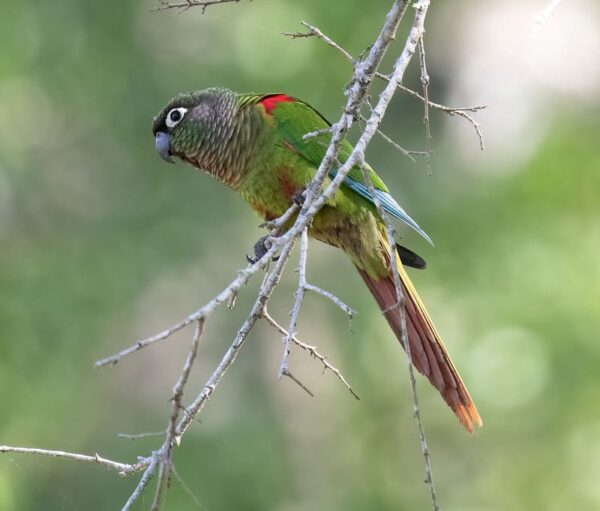
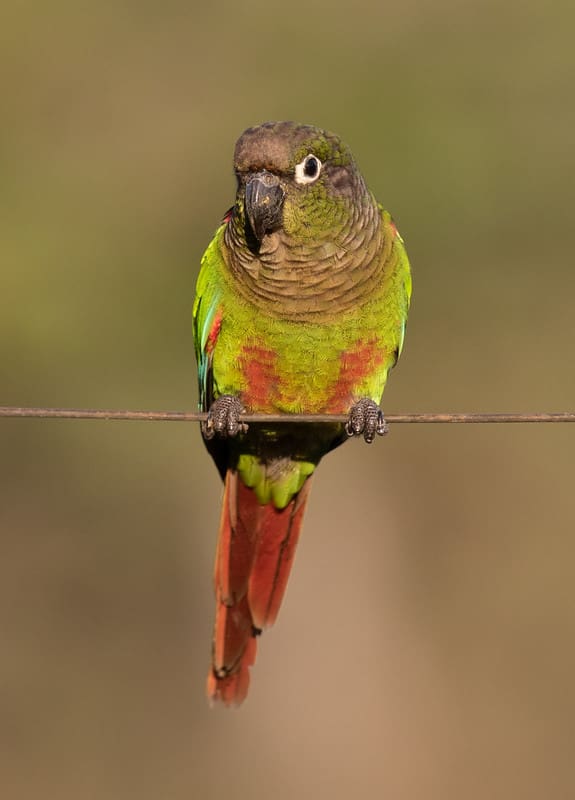
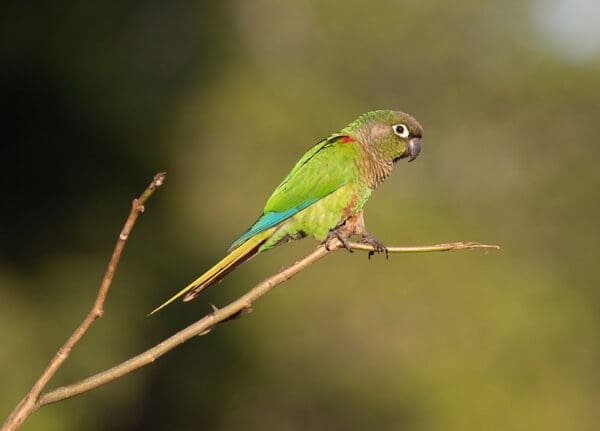
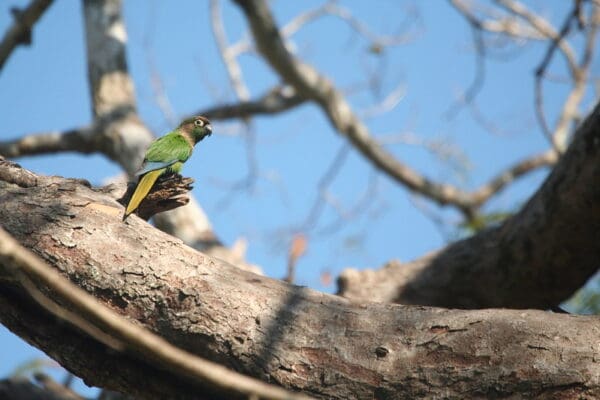
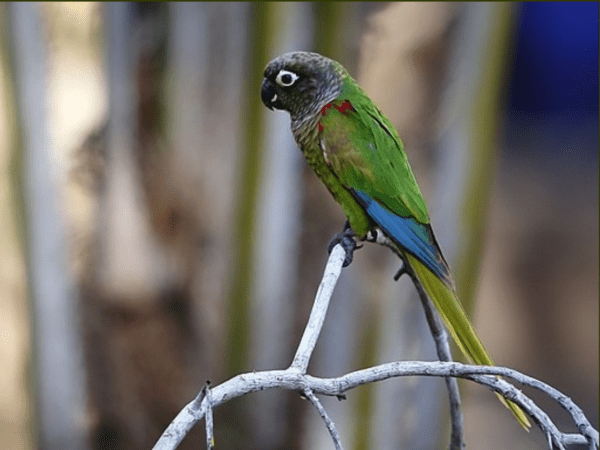
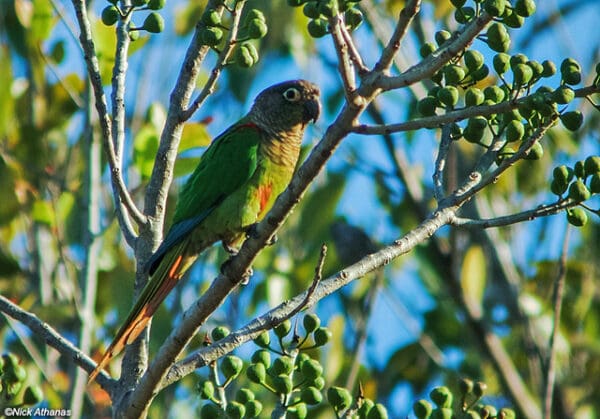
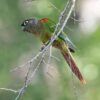
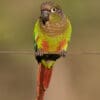
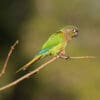
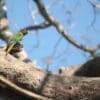
![© Hector Bottai [CC BY-SA 4.0] via Wikimedia Commons A wild Blaze-winged Conure perches on a branch](https://parrots.org/wp-content/uploads/2023/01/Blaze-winged-Conure-100x100.png)
![© Nick Athanas [CC BY-NC 2.0] via Flickr A wild Blaze-winged Conure perches in a fruiting tree](https://parrots.org/wp-content/uploads/2023/01/wpt_Blaze-winged-Conure_1332-100x100.jpg)